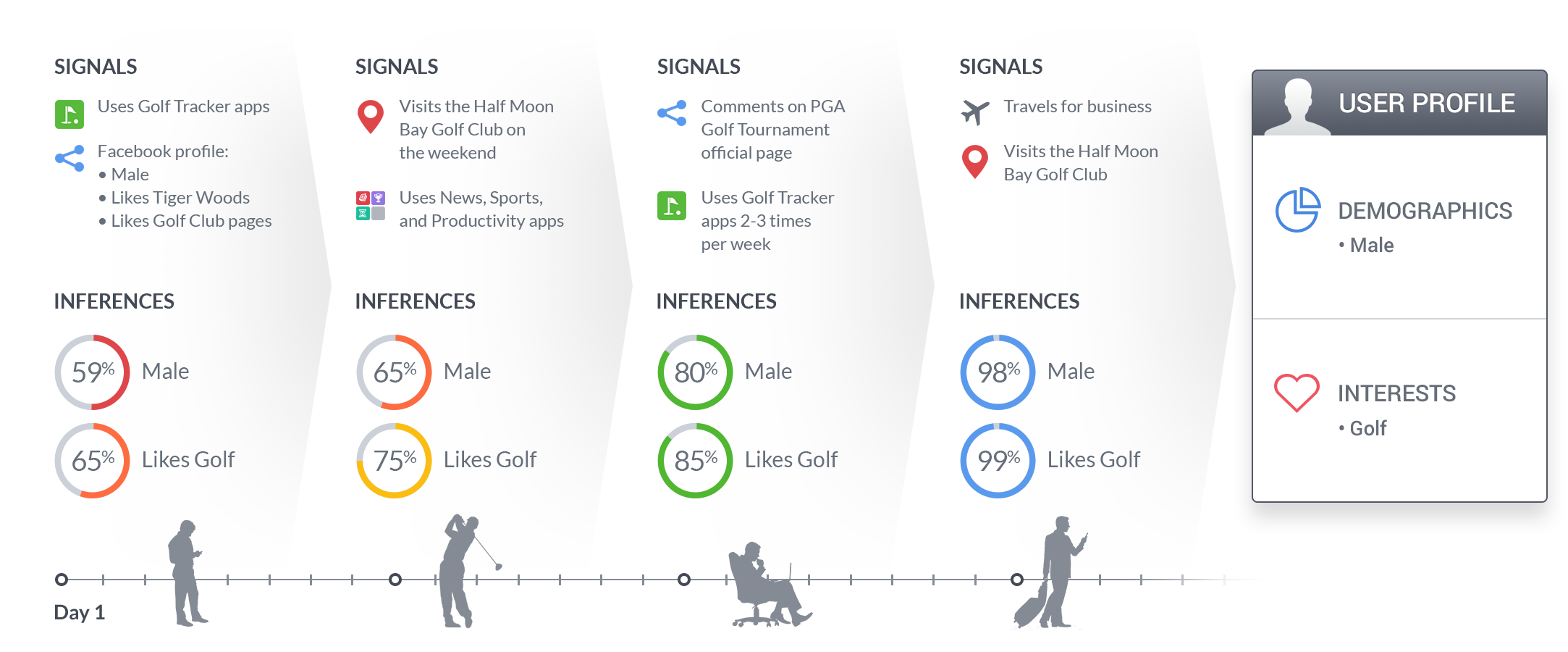With the proliferation of mobile devices in recent years, advertising has become increasingly complex. No longer can one assume that one device equals one person as was usually the case on desktop. Today, people are using a number of different devices to interact with each other and with brands. In addition, they are doing so using a variety of channels, for example through email, social, and search. While consumers are clearly channel and device agnostic, data often is not. Dominant players not wanting to share, outdated cookie technologies, a lack of technical standards, there are a number of reasons why data is not always holistically accessible. For these reasons, Data Management Platforms (DMP) are in hot demand right now. Marrying 1st, 2nd, and 3rd party data.
DMPs gather data from a multitude of sources and analyze these to identify consumers and create audience profiles. Publishers are an important source for 1st party audience data but what makes DMPs special is that advertisers can integrate their own CRM and analytics systems in order to leverage their own 1st party data as well. This makes it possible to locate existing customers as they browse apps and websites. 2nd party data such as interests data from audiences that clicked through provided by ad networks add a new layer of intelligence that is joined seamlessly with 1st party data. Lastly, 3rd party data from public sources and data brokers can be brought in to fill in any gaps which makes for a 3D picture of target audiences. This combination provides unprecedented opportunities to advertisers and agencies in terms of targeting and measurement.
Improved (re)targeting
An essential part of advertising is displaying your message in places where your target customers hang out. Leveraging 1st party data means you feed (hashed) data about your current customers into a DMP which can then locate these across the web, allowing you to target those people that you know like your products or brand. Moreover, 1st party data often comes with unique insights into customers’ buying behavior.
For example, if you are an E-commerce company and an existing customer adds a product to his shopping cart but then abandons it you can be pretty sure he’s interested in buying that particular product. This knowledge can then be used to target this person with targeted offers through mobile ads when he’s browsing a news app for example. Countless other use cases can be thought of for other types of advertisers with 1st party data.
Lookalike marketing and audience discovery
Obviously retargeting existing customers is great. However, if your job is to grow sales you’re going to have to find new customers as well. The benefit with marrying the different types of data is that a DMP can find audiences that look like your current customers and target them with ads across channels. This type of lookalike marketing is extremely potent because it reaches the type of people that you have a proven track record with. In addition to finding similar audiences, combining data can also deliver new insights regarding current customers. For example, most commonly 1st party data consists of demographics and buying behavior. By matching individuals to 3rd party data a DMP can uncover interest data for these customers which can then be used to define new target audiences.
Fixing omnichannel
Somewhat of a holy grail in advertising today is measuring campaign effectiveness across channels. As mentioned above, data is often not able to flow freely across channels which makes it very difficult to compare results, which in turn causes a sub-optimal allocation of ad spend between these channels.
Since DMPs have access to a wide variety of 1st, 2nd, and 3rd party data from essentially every digital device they are able to identify when different devices belong to the same person. This means they can track how consumers visit different touch points on their purchasing journey. Rather than simply attributing a conversion to the last touch or first touch, DMPs are able to attribute this to all relevant encountered touch points. In doing so, they can measure campaign performance across channels and adjust budgets accordingly. It also provides marketers with feedback about each channel’s effectiveness which they can use to test and improve creatives.
Implementing a DMP
As programmatic advertising continues to gain popularity we’ll see more and more advertisers and publishers turn to DMPs to provide them with a backbone of solid data to coordinate these campaigns. In fact, according to ExchangeWire 53% of media sellers and 43% of media buyers already use DMPs today and a staggering 91% of those saw a positive ROI within 12 months.
There are some obstacles as well. Consumer privacy is a hot topic right now and organizations are strongly advised to comply given the recent FTC rulings against violating companies. Chances are regulations are bound to become more strict which makes it paramount to have the right provisions in place. Another issue is the technical implementation of a DMP which needs a lot of specialized skills and knowledge to do properly. However, given those numbers on ROI it’s likely that using a DMP is the right choice for the vast majority of advertisers and agencies. It is promising to be the ultimate advertising tool of the 21st century.
